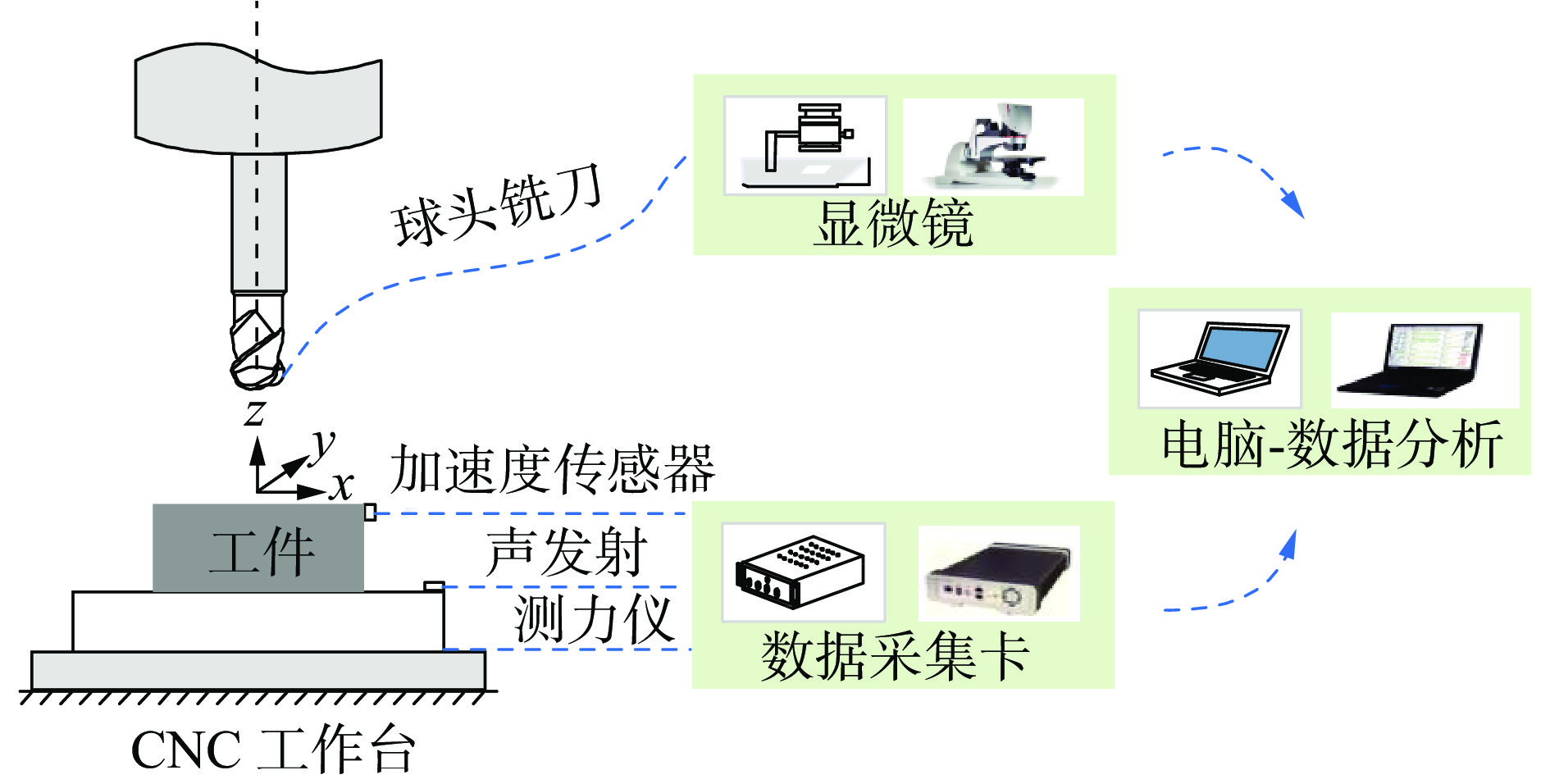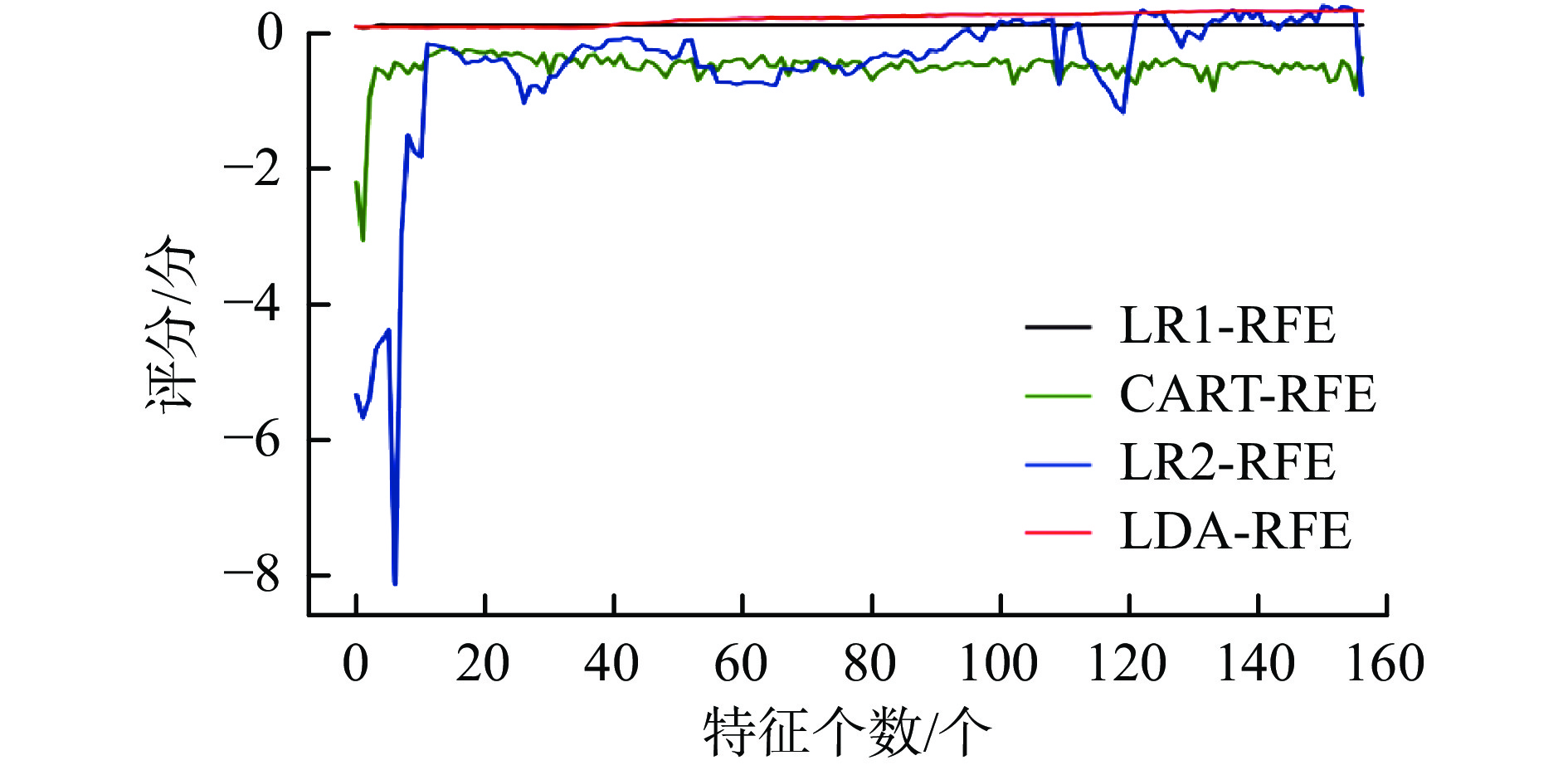Application Research on Recursive Feature Elimination and Extra Trees in Milling Cutter Wear Monitoring
-
摘要: 针对金属铣削过程中刀具磨损监测问题,本文提出了一种基于递归特征消除和极端随机树相结合的刀具磨损监测模型。首先对力、振动和声发射信号的时域、频域特征进行提取,分别采用逻辑回归、分类与回归树、线性回归、线性判别分析作为递归特征消除的基模型进行特征降维。再利用处理后的特征对K近邻、支持向量回归、极端随机树模型进行训练,得出多种监测模型。通过对比刀具磨损拟合曲线图和分析评估结果的标准差,可得出基模型为分类与回归树的递归特征消除,与极端随机树算法相结合模型拟合度达到99.74%,评估结果的标准差为4.04。结果表明该方法能够实现对铣刀磨损的有效监测,从而提高零件加工质量。Abstract: To solve the problem of tool wear monitoring in metal milling, a tool wear monitoring model is proposed based on recursive feature elimination and extra trees algorithm. Firstly, the time and frequency domain features of force, vibration and acoustic emission signals are extracted. Logistic regression, classification and regression tree, linear regression and linear discriminant analysis are used as base model of recursive feature elimination for feature dimension reduction. Then the processed features are used to train the K nearest neighbor, support vector regression and extra trees models, and a variety of monitoring models are obtained. By comparing the tool wear fitting curve and analyzing the standard deviation of the evaluation results, it can be concluded that the base model is the recursive feature elimination of classification and regression tree. The fitting degree of the model combined with the extreme random tree algorithm reaches 99.74 %, and the standard deviation of the evaluation result is 4.04. The results show that this method can effectively monitor the wear of milling cutter, so as to improve the machining quality of parts.
-
表 1 每组最佳特征数量
LR1-RFE CART-RFE LR2-RFE LDA-RFE 5 9 153 157 表 2 特征排序
名次 LR1-RFE CART-RFE LR2-RFE LDA-RFE 1 频率平均值Vy 频率的根方差Vx 最小频率Vy 频率的峰度Fy 2 频率平均值AE Peak value Fy 最小频率Fz 频率的峰度Fz 3 频率平均值Fy 频率平均值Vx 最小频率Vx 频率的峰度Fx 4 频率平均值Vx 频谱均值Vx 最小频率Fy 频率的峰度AE 5 频率平均值Fx THD Fx 最小频率AE 频率的峰度Vy $\vdots $ $\vdots $ $\vdots $ $\vdots $ $\vdots $ 156 频率的峰度Fx 频率的峰度Vz 频率的偏斜系数AE 频率平均值Vy 157 频率的峰度Fz 频率的峰度AE 频率平均值Fz 频率平均值Fz 表 3 决策树数量评分
决策树数量 评分结果 标准方差 20 −99.417794 14.471892 30 −103.125864 15.818076 40 −98.549355 14.460887 50 −97.995295 13.652701 60 −96.014613 14.592283 70 −100.100593 14.644818 80 −96.183946 15.307290 90 −98.718908 16.066450 表 4 模型拟合度(评估结果的标准差)
特征集 特征个数 KNN SVC ET LR1-RFE (FD1) 5 95.38%
(72.43)91.93%
(126.48)96.67%
(52.19)CART-RFE (FD2) 9 99.33%
(10.47)96.17%
(59.95)99.74%
(4.04)LR2-RFE (FD3) 153 99.02%
(15.31)98.72%
(19.93)99.82%
(2.76)LDA-RFE (FD4) 157 98.95%
(16.41)98.77%
(19.28)98.51%
(23.28) -
[1] 袁军, 刘丽冰, 张艳蕊, 等. 刀具磨损状况的检测方法研究综述[J]. 现代制造工程, 2021(3): 152-160. doi: 10.16731/j.cnki.1671-3133.2021.03.024YUAN J, LIU L B, ZHANG Y R, et al. Survey of research on detection methods for tool wear condition[J]. Modern Manufacturing Engineering, 2021(3): 152-160. (in Chinese) doi: 10.16731/j.cnki.1671-3133.2021.03.024 [2] 周明佳, 孙艳茹, 逄崇雁. 刀具磨损对屑形变化的影响分析[J]. 科学技术创新, 2021(6): 180-181. doi: 10.3969/j.issn.1673-1328.2021.06.080ZHOU M J, SUN Y R, PANG C Y. Analysis of the influence of tool wear on chip shape change[J]. Scientific and Technological Innovation, 2021(6): 180-181. (in Chinese) doi: 10.3969/j.issn.1673-1328.2021.06.080 [3] BIST A, SAINI J S, SHARMA B. A review of tool wear prediction during friction stir welding of aluminium matrix composite[J]. Transactions of Nonferrous Metals Society of China, 2016, 26(8): 2003-2018. doi: 10.1016/S1003-6326(16)64318-2 [4] ULAPANE N, NGUYEN L. Review of pulsed-eddy-current signal feature-extraction methods for conductive ferromagnetic material-thickness quantification[J]. Electronics, 2019, 8(5): 470. doi: 10.3390/electronics8050470 [5] OU J Y, LI H K, HUANG G J, et al. A novel order analysis and stacked sparse auto-encoder feature learning method for milling tool wear condition monitoring[J]. Sensors, 2020, 20(10): 2878. doi: 10.3390/s20102878 [6] HELMI H, FOROUZANTABAR A. Rolling bearing fault detection of electric motor using time domain and frequency domain features extraction and ANFIS[J]. IET Electric Power Applications, 2019, 13(5): 662-669. doi: 10.1049/iet-epa.2018.5274 [7] JUNIOR P O C, AGUIAR P R, FOSCHINI C R, et al. Feature extraction using frequency spectrum and time domain analysis of vibration signals to monitoring advanced ceramic in grinding process[J]. IET Science, Measurement & Technology, 2019, 13(1): 1-8. [8] RAY P, REDDY S S, BANERJEE T. Various dimension reduction techniques for high dimensional data analysis: a review[J]. Artificial Intelligence Review, 2021, 54(5): 3473-3515. doi: 10.1007/s10462-020-09928-0 [9] 王二化, 刘颉. 基于主成分分析和BP神经网络的微铣刀磨损在线监测[J]. 组合机床与自动化加工技术, 2021(1): 114-117. doi: 10.13462/j.cnki.mmtamt.2021.01.027WANG E H, LIU J. Online wear monitoring of micro milling tool based on principal component analysis and BP neural network[J]. Modular Machine Tool & Automatic Manufacturing Technique, 2021(1): 114-117. (in Chinese) doi: 10.13462/j.cnki.mmtamt.2021.01.027 [10] CHEN G S, ZHENG Q Z. Online chatter detection of the end milling based on wavelet packet transform and support vector machine recursive feature elimination[J]. The International Journal of Advanced Manufacturing Technology, 2018, 95(1): 775-784. [11] 赵明利, 袁一鸣, 宋士杰, 等. 基于特征选择和模糊支持向量机的刀具磨损状态识别[J]. 制造技术与机床, 2020(11): 115-120. doi: 10.19287/j.cnki.1005-2402.2020.11.024ZHAO M L, YUAN Y M, SONG S J, et al. Tools wear state recognition based on feature selection and fuzzy support vector machine[J]. Manufacturing Technology & Machine Tool, 2020(11): 115-120. (in Chinese) doi: 10.19287/j.cnki.1005-2402.2020.11.024 [12] 范云龙, 陈劲杰. 基于KNN的刀具磨损状态检测[J]. 农业装备与车辆工程, 2019, 57(9): 74-75. doi: 10.3969/j.issn.1673-3142.2019.09.017FAN Y L, CHEN J J. Tool wear state detection based on KNN[J]. Agricultural Equipment & Vehicle Engineering, 2019, 57(9): 74-75. (in Chinese) doi: 10.3969/j.issn.1673-3142.2019.09.017 [13] 聂鹏, 李锋, 李正强. 基于云模型和稀疏贝叶斯技术的刀具磨损状态识别技术研究[J]. 机电信息, 2017(33): 102-103. doi: 10.3969/j.issn.1671-0797.2017.33.056NIE P, LI F, LI Z Q. Research on tool wear state recognition technology based on cloud model and sparse bayesian technology[J]. Mechanical and Electrical Information, 2017(33): 102-103. (in Chinese) doi: 10.3969/j.issn.1671-0797.2017.33.056 [14] 赵帅, 黄亦翔, 王浩任, 等. 基于随机森林与主成分分析的刀具磨损评估[J]. 机械工程学报, 2017, 53(21): 181-189. doi: 10.3901/JME.2017.21.181ZHAO S, HUANG Y X, WANG H R, et al. Random forest and principle components analysis based on health assessment methodology for tool wear[J]. Journal of Mechanical Engineering, 2017, 53(21): 181-189. (in Chinese) doi: 10.3901/JME.2017.21.181 [15] LYHUY P. 基于SVM的铣削过程刀具磨损状态分类研究[D]. 哈尔滨: 哈尔滨工业大学, 2019LYHUY P. Study on tool wear classification using support vector machines in a milling process[D]. Harbin: Harbin Institute of Technology, 2019. (in Chinese) [16] 陶耀东, 曾广圣, 李宁. 基于回归树和AdaBoost方法的刀具磨损评估[J]. 计算机系统应用, 2017, 26(12): 212-219. doi: 10.15888/j.cnki.csa.006117TAO Y D, ZENG G S, LI N. Tool wear evaluation based on decision tree regression and AdaBoost algorithm[J]. Computer Systems & Applications, 2017, 26(12): 212-219. (in Chinese) doi: 10.15888/j.cnki.csa.006117 [17] MAO X T, ZHANG F, WANG G, et al. Semi-random subspace with Bi-GRU: fusing statistical and deep representation features for bearing fault diagnosis[J]. Measurement, 2021, 173: 108603. doi: 10.1016/j.measurement.2020.108603 [18] CHEN Q, MENG Z P, LIU X Y, et al. Decision variants for the automatic determination of optimal feature subset in RF-RFE[J]. Genes, 2018, 9(6): 301. doi: 10.3390/genes9060301 -








 下载:
下载:







